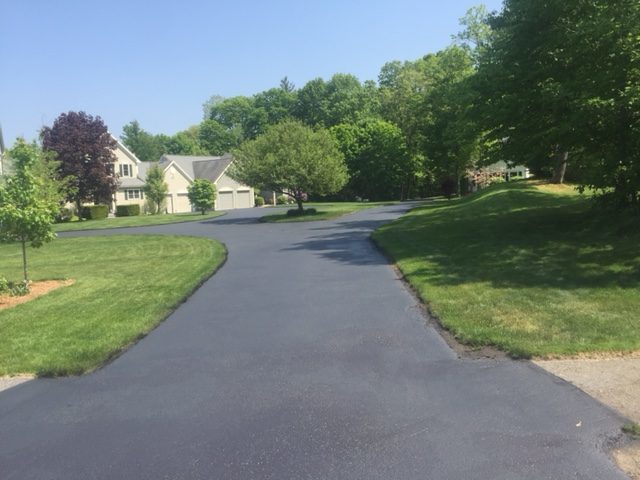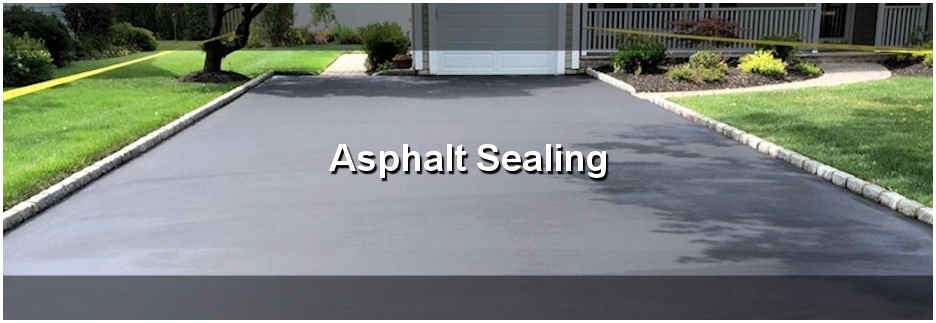Revitalize Your Home with Regrading and Asphalt Sealing Strategies
Revitalize Your Home with Regrading and Asphalt Sealing Strategies
Blog Article
Warm Mix Asphalt: A Sustainable Solution for Pavement
Warm Mix Asphalt (HMA) has become a leading sustainable option for sidewalk options, providing a myriad of environmental benefits and cutting-edge technologies. Its ability to reuse materials and minimize power intake presents an engaging instance for its adoption in roadway building and construction jobs. Moreover, the long-lasting efficiency and sturdiness of HMA make it a preferred choice for framework advancement. As the need for environment-friendly building practices grows, exploring the nuances of HMA's sustainability can give important insights right into the future of pavement options.
Environmental Benefits of Hot Mix Asphalt

Additionally, Warm Mix Asphalt assists to alleviate metropolitan warm island effects. Its dark shade takes in sunshine, lowering the amount of warmth reflected back right into the ambience contrasted to lighter-colored pavements. This can decrease ambient temperature levels in urban locations, lowering the demand for air conditioning and eventually lowering energy consumption.
Additionally, Warm Mix Asphalt adds to enhanced stormwater administration. Its permeable nature enables water to recharge and infiltrate the sidewalk groundwater products, lowering drainage and the threat of flooding. These ecological benefits make Hot Mix Asphalt a sustainable choice for leading highways and roads.
Power Efficiency in HMA Manufacturing
Is power effectiveness an important variable in the production of Hot Mix Asphalt (HMA)? Energy plays a significant role in the production of HMA, impacting both price and environmental sustainability. One vital element of power effectiveness in HMA production is the use of warm mix asphalt (WMA) innovations.
In addition, improvements in plant modern technologies have led to more energy-efficient HMA production procedures. By optimizing energy use in HMA production, the market can reduce its carbon footprint while keeping top quality pavement products.
Recyclability of Warm Mix Asphalt
The recyclability of Hot Mix Asphalt (HMA) is a pivotal element of its sustainability and lasting ecological impact. HMA is among the most recycled products in the United States, with over 100 million bunches of redeemed asphalt pavement (RAP) being recycled every year in brand-new sidewalk building. Reusing HMA supplies several environmental advantages, such as decreasing the need for see here virgin materials, lowering power usage during production, and lowering the quantity of waste sent out to landfills.
The process of recycling HMA entails milling the existing sidewalk, squashing it right into smaller items, and mixing it with brand-new accumulation and asphalt binder to produce a recycled mix. On the whole, the resource recyclability of HMA plays a substantial role in promoting sustainable methods within the sidewalk industry.

Long-Term Efficiency of HMA
Asphalt sidewalks show durability and resilience over an extensive duration, mirroring the long-lasting efficiency of Warm Mix Asphalt (HMA) The long life of HMA can be attributed to its capability to withstand heavy web traffic loads, harsh climate problems, and the impacts of aging. Studies have shown that well-designed and effectively constructed HMA pavements can last for two decades or even more with routine upkeep. The key to making the most of the lasting efficiency of HMA lies in making use of high-grade materials, following finest practices in building, and carrying out effective upkeep methods. Proper drainage, regular inspections, and timely fixings are important for maintaining the architectural Click This Link stability of HMA pavements in time. Additionally, advancements in HMA innovation, such as the use of polymer-modified binders and warm mix asphalt, have actually even more enhanced the sturdiness and long life of HMA pavements. By prioritizing quality building and maintenance methods, HMA remains to prove itself as a cost-efficient and sustainable service for resilient sidewalk facilities.

HMA: Toughness and Sustainability
Demonstrating both durability and sustainability, Hot Mix Asphalt (HMA) has actually ended up being a foundation in the building and construction of resilient pavement facilities - commercial parking lot paving. HMA's toughness stems from its capacity to endure heavy loads, extreme weather, and high traffic quantities, making it a dependable choice for streets, highways, and airport terminal paths. The composition of HMA, which typically includes accumulations, binder, and filler, plays a crucial role in enhancing its long life and resistance to tear and put on
In addition, HMA's sustainability exists in its recyclability and energy-efficient production procedure. The ability to reuse recovered asphalt sidewalk (RAP) in brand-new HMA combinations minimizes the demand for virgin materials and decreases the environmental impact of pavement building and construction and upkeep. Furthermore, the power performance of creating HMA hinges on its lower blending temperatures contrasted to other sidewalk products, leading to lowered power usage and greenhouse gas discharges.
Verdict
In verdict, hot mix asphalt (HMA) offers a sustainable remedy for sidewalk with its environmentally pleasant characteristics. HMA's recyclability, energy efficiency in manufacturing, and long-lasting durability make it an eco-friendly choice for road construction.
HMA is one of the most recycled products in the United States, with over 100 million heaps of redeemed asphalt sidewalk (RAP) being recycled every year in brand-new pavement building.The process of recycling HMA includes grating the existing sidewalk, crushing it into smaller pieces, and mixing it with brand-new aggregate and asphalt binder to produce a recycled mix.Asphalt pavements show durability and strength over a prolonged period, showing the long-term efficiency of Warm Mix Asphalt (HMA) Additionally, improvements in HMA technology, such as the usage of polymer-modified binders and warm mix asphalt, have actually better boosted the durability and longevity of HMA pavements. The ability to reuse redeemed asphalt pavement (RAP) in brand-new HMA blends decreases the demand for virgin products and decreases the ecological impact of sidewalk building and upkeep.
Report this page